Posts Tagged "SEO best practices"
Articles
- Best Marketing Conference Sponsorship
- What Does it Mean to Be an Exhibitor at a Conference?
- What Is the Biggest Social Media Conference?
- What Is an Innovation Conference?
- What Is a Typical B2B Event?
- What Are the Cloud Technology Events in 2025?
- Marketing Event Volunteer Opportunities: A Comprehensive Guide
- Digital Marketing Event Volunteer Opportunities Near Me
- What Does a Volunteer Do at a Conference?
- Is DigiMarCon Worth It?
- Is DigiMarCon Good?
- What is the Biggest Marketing Forum?
- What are Digital Marketing Conferences?
- Marketing Conference Exhibiting: Your Guide to Success
- Digital Summit Comparison: A Closer Look at DigiMarCon
- Digital Marketing Conference
- Digital Marketing Events: Your Guide to Success in 2025
- Marketing Conferences: Unlocking Your Business Potential in 2025
- What Is The Future of Digital Marketing in 2030?
- B2B Event Marketing Strategy: Unlocking Success For Your Business
- Why B2B Event Marketing?
- What Should a B2B Marketing Strategy Include?
- Top Marketing Conferences for 2025
- What Is the Future of Marketing in 2025?
Digital Marketing Conferences
- NORTH AMERICA
- DigiMarCon Cruise
(New Orleans, LA, USA) - DigiMarCon West
(Los Angeles, CA, USA) - DigiMarCon Northwest
(Seattle, WA, USA) - DigiMarCon Canada West
(Vancouver, BC, USA) - DigiMarCon Canada
(Toronto, ON, Canada) - DigiMarCon Canada East
(Montreal, QC, Canada) - DigiMarCon Florida
(Orlando, FL, USA) - DigiMarCon Gulf Coast
(Houston, TX, USA) - DigiMarCon Southern California
(San Diego, CA, USA) - DigiMarCon Midwest
(Chicago, IL, USA) - DigiMarCon Mid-South
(Nashville, TN, USA) - DigiMarCon Great Lakes
(Detroit, MI, USA) - DigiMarCon North
(Minneapolis, MN, USA) - DigiMarCon Central
(Kansas City, MO, USA) - DigiMarCon Texas
(Dallas, TX, USA) - DigiMarCon New England
(Boston, MA, USA) - DigiMarCon Mid-Atlantic
(Philadelphia, PA, USA) - DigiMarCon South Florida
(Miami, FL, USA) - DigiMarCon Southeast
(Atlanta, GA, USA) - DigiMarCon Central Florida
(Tampa, FL, USA) - DigiMarCon East
(New York, NY, USA) - DigiMarCon South Atlantic
(Charlotte, NC, USA) - DigiMarCon America
(Washington, D.C. USA) - DigiMarCon Northern California
(San Francisco, CA, USA) - DigiMarCon Rocky Mountains
(Denver, CO, USA) - DigiMarCon South
(San Antonio, TX, USA) - DigiMarCon Silicon Valley
(San Jose, CA, USA) - DigiMarCon Orange County
(Anaheim, CA, USA) - DigiMarCon Southwest
(Phoenix, AZ, USA) - DigiMarCon World
(Las Vegas, NV, USA)
- DigiMarCon Cruise
- LATIN AMERICA
- EUROPE
- MIDDLE EAST
- AFRICA
- ASIA PACIFIC
- DigiMarCon Hawaii & Pacific
(Honolulu, HI, USA) - DigiMarCon Asia & Japan
(Tokyo, Japan) - DigiMarCon New Zealand
(Auckland, New Zealand) - DigiMarCon Australia
(Sydney, Australia) - DigiMarCon Oceania
(Melbourne, Australia) - DigiMarCon Southeast Asia
(Singapore) - DigiMarCon India
(New Delhi, India) - DigiMarCon North Asia & China
(Shanghai, China)
- DigiMarCon Hawaii & Pacific
- VIRTUAL
Digital Marketing Blog
- How to Get Involved at DigiMarCon: Your Guide to Opportunities October 28, 2025
- Connect, Collaborate, and Grow: DigiMarCon Partner Benefits October 28, 2025
- Boost Your Brand with DigiMarCon Partnership Opportunities October 28, 2025
- The Value of Becoming a DigiMarCon Partner October 28, 2025
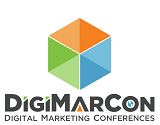


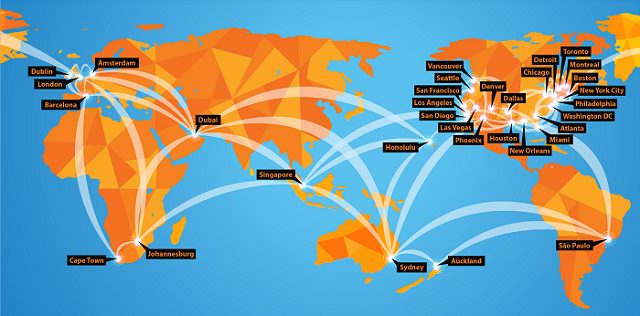


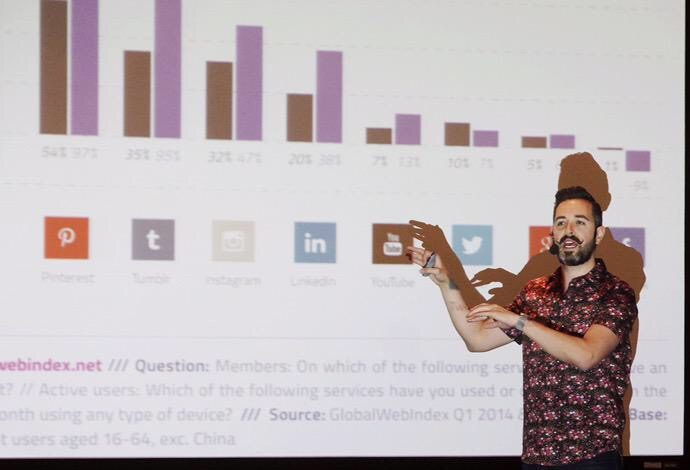


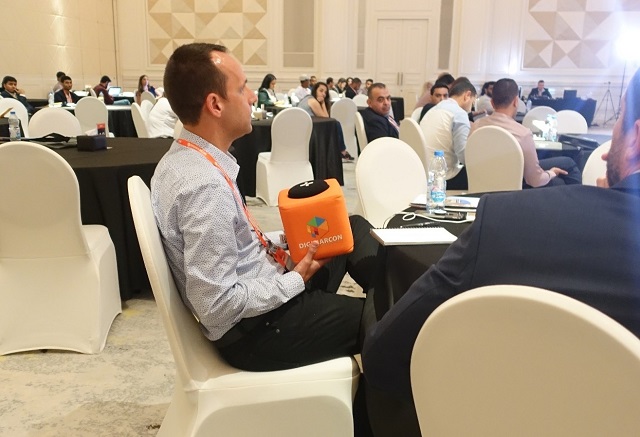







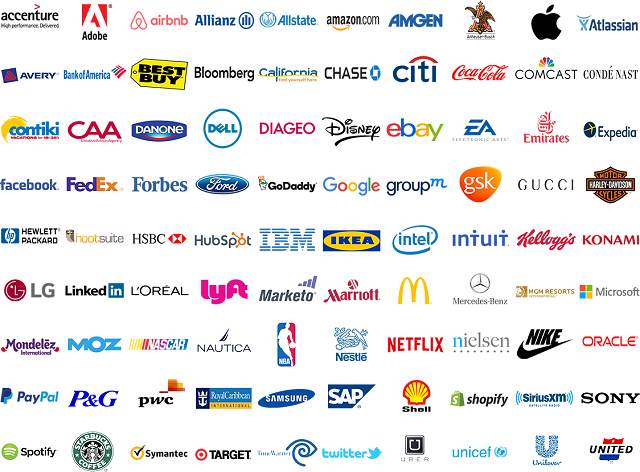















Discover Powerful SEO Optimization Techniques
In today’s digital world, having a strong online presence is key for businesses. As a digital marketing pro, you know how important effective SEO strategies are. They help your website get seen more and bring in more visitors.
Search engine optimization best practices keep changing. It’s crucial to keep up with new trends to stay ahead. This article will show you the best SEO optimization techniques. They’ll help improve your online marketing and boost your website’s ranking.
Key Takeaways
The Evolution of Search Engine Algorithms in 2023
2023 has brought big changes to how search engines work. These updates mean we need to rethink search engine optimization best practices.
Search engines now check content in a more detailed way. This change helps them give users the best and most relevant content.
How Modern Search Engines Evaluate Content
Today’s search engines use advanced algorithms to judge content. They look at how deep the content is, how users interact with it, and technical stuff like page speed.
Recent Algorithm Updates and Their Impact
Recent updates have changed how websites rank. Knowing about these updates is key for a good SEO plan.
Google’s Core Updates
Google’s core updates are a big deal for SEO experts. These updates aim to improve content quality and relevance. It’s important to keep up with the latest changes.
E-E-A-T and Content Quality Signals
The E-E-A-T framework (Experience, Expertise, Authoritativeness, Trustworthiness) is now a big part of Google’s content check. Making sure your content shows these qualities is crucial for better rankings.
To boost your content’s E-E-A-T score, create well-researched, authoritative content. Show your expertise by highlighting your credentials and providing detailed guides. Also, make sure the information is accurate.
Proven SEO Optimization Techniques for Immediate Results
In the fast-changing world of digital marketing, using SEO optimization techniques is key for quick wins. Focus on smart keyword research, better content structure, and enhanced metadata. These steps can greatly improve your site’s ranking on search engines.
Strategic Keyword Research Methodology
Good keyword research is the base of a strong SEO plan. It’s about finding the right keywords that match your business and attract lots of visitors. Keyword research tools like Ahrefs, SEMrush, and Moz Keyword Explorer are great for this.
Short-tail vs. Long-tail Keywords
Knowing the difference between short-tail and long-tail keywords is important. Short-tail keywords are broad and very competitive. Long-tail keywords are more specific and less competitive. For instance, “SEO optimization” is a short-tail keyword, while “SEO optimization techniques for small businesses” is a long-tail one.
Semantic Search Considerations
With semantic search becoming more common, it’s vital to think about the context and intent of search queries. Create content that answers questions and offers real value. This way, your site becomes more visible and relevant in search results.
Content Structure Best Practices
A well-organized content is essential for better user experience and higher search rankings. Use header tags (H1, H2, H3), break content into paragraphs, and add relevant images.
Metadata Enhancement for Higher CTR
Metadata, like title tags and meta descriptions, is crucial for better click-through rates (CTR). Craft compelling and detailed metadata to draw users in. This can boost your site’s visibility and bring more visitors to your page.
On-Page SEO Factors That Drive Organic Traffic
To make your website more visible, focus on key on-page SEO elements. On-page SEO involves several important parts. Each part helps improve your website’s ranking and brings in more organic traffic.
Content Quality and Relevance Signals
High-quality, relevant content is key for on-page SEO. Search engines look for content that adds value, is well-researched, and updated often. Create comprehensive, engaging content that meets your audience’s needs.
Header Tag Hierarchy and Optimization
Using header tags (H1, H2, H3, etc.) is crucial. It helps organize your content for both users and search engines. Make sure your header tags are logically organized and include relevant keywords.
Internal Linking Strategy Development
A good internal linking strategy helps search engines understand your site. It also makes it easier for users to navigate. Use descriptive anchor text for your links.
Image and Multimedia Optimization
Optimizing images and multimedia is key for faster page loads and better user engagement. Use descriptive alt text and consider file size and format.
Alt Text Implementation
Alt text describes images for search engines. Use relevant keywords in your alt text, but keep it accurate and descriptive.
File Size and Format Considerations
Large files slow down your site, hurting user experience and rankings. Compress your images and use the right file formats (e.g., JPEG for photos, PNG for graphics).
Technical SEO Elements Critical for Rankings
Technical SEO is key to a good SEO plan. It helps search engines see and rank websites better. By improving technical parts, sites can get more visible and rank higher.
Page Speed Optimization Techniques
Page speed matters a lot for users and search rankings. To make pages load faster, work on Core Web Vitals Improvement and Server Response Time Reduction.
Core Web Vitals Improvement
Boosting Core Web Vitals means bettering Largest Contentful Paint, First Input Delay, and Cumulative Layout Shift. This can be done by optimizing images, using new web formats, and making JavaScript run smoothly.
Server Response Time Reduction
Lowering server response time boosts page speed. Use Content Delivery Networks (CDNs), tweak server settings, and apply caching.
Mobile-First Indexing Compliance
Most searches are now on mobile. So, making sure your site is mobile-friendly is crucial. This means having a site that works well on small screens, loads fast, and has easy-to-read content.
Structured Data and Schema Markup
Adding structured data and schema markup helps search engines get your site’s content. This makes search results more detailed and useful.
Crawlability and Indexation Management
Good crawlability and indexation help search engines find and list your site’s content. This is done by optimizing robots.txt files, using sitemaps, and managing links.
Off-Page SEO Strategies That Build Domain Authority
Off-page SEO is key in the world of search engine optimization. It helps build domain authority. As search engines get better, a strong off-page SEO plan is more important than ever.
Effective Link Building Tactics for 2023
Link building is still a big deal in off-page SEO. In 2023, it’s not just about getting lots of links. It’s about getting quality links from trusted sites.
Guest Posting Strategies
Guest posting is a great way to get quality backlinks. By writing for other reputable sites, you get a backlink and reach more people.
Resource Link Acquisition
Creating useful content that others want to link to is key. This can be guides, original research, or informative articles.
Social Signals and Their SEO Impact
Social signals aren’t a direct ranking factor but are important. They can bring more traffic and make your content more visible, leading to more backlinks.
Brand Mentions and Unlinked Citations
Brand mentions and unlinked citations are getting more attention. These are when your brand is mentioned online without a link. Using these mentions can boost your domain authority.
Using these off-page SEO strategies can really help your website. It can make your site more visible and improve its ranking on search engines.
White Hat SEO Methods for Sustainable Growth
White hat SEO is the best way to grow online. It focuses on doing things right and making users happy. This is key as search engines get smarter.
Ethical Link Acquisition Approaches
Getting good backlinks is vital in white hat SEO. It means making link-worthy content that others want to link to. You can do this by guest blogging, working with influencers, or making detailed guides.
User Experience as an SEO Factor
User experience is now a big deal for SEO. Search engines like sites that are easy to use. This includes fast loading times, being mobile-friendly, and being easy to navigate.
Bounce Rate Reduction Techniques
To lower bounce rates, make content that grabs people’s attention right away. Use improving content relevance, catchy headlines, and a clean site design.
Dwell Time Optimization
To keep users on your site longer, make content that holds their interest. Use in-depth information, videos, and infographics. Make your content easy to follow.
Content-Driven Ranking Strategies
Focus on making content that meets your audience’s needs. Understand what they want, use keywords wisely, and update your content often.
Comprehensive SEO Audit Checklist for Website Evaluation
A comprehensive SEO audit checklist is key for checking your website. It helps spot technical, content, and link issues that affect your site’s performance.
Technical Audit Components and Tools
A technical SEO audit looks at your website’s setup. It checks if it’s easy for search engines to crawl and index. Important parts include:
Tools like Screaming Frog and Ahrefs find technical problems.
Content Quality and Relevance Assessment
Checking content quality means looking at several things:
Tools like Grammarly and Hemingway Editor can make your content better.
Backlink Profile Analysis and Cleanup
Looking at your backlink profile means finding good and bad links. Tools like Ahrefs and Moz help with this.
Competitor Benchmarking Methodology
Competitor benchmarking means studying your rivals. It helps find your site’s strengths and weaknesses. This includes:
Identifying Competitive Gaps
Looking at your competitors’ weaknesses can show you how to improve.
Opportunity Analysis Framework
An opportunity analysis framework helps you focus on the most important improvements. It looks at how big the impact could be and how easy it is to do.
Advanced Keyword Research Tools and Methodologies
In the world of SEO, advanced keyword research tools are key. They help find the right keywords and understand what your audience is looking for.
Premium SEO Tools Worth the Investment
Premium SEO tools can really boost your keyword research. They have features that let you outdo your rivals.
Ahrefs, SEMrush, and Moz Capabilities
Ahrefs, SEMrush, and Moz are top for keyword research. Ahrefs has a huge keyword database and content analysis features. SEMrush gives you competitor analysis and technical SEO audits. Moz is great for keyword research and link building.
Specialized Niche Tools
There are also niche tools for specific needs. Ubersuggest and Keyword Planner help with brainstorming. Long Tail Pro is good for finding long-tail keywords.
Free Alternatives for Budget-Conscious Businesses
Not every business can afford premium tools. But, there are free options that offer great insights. Google’s Keyword Planner and Ubersuggest’s free version are good examples.
Search Intent Analysis and Implementation
Knowing what people are searching for is key. By understanding search intent, you can make content that really meets your audience’s needs. Use tools to see if people are looking for info, products, or services. Then, tailor your content to match.
Local SEO Tactics for Geo-Targeted Visibility
Search engines keep getting better, making local SEO key for businesses. By using smart local SEO strategies, companies can show up more in local searches. This brings more people to their websites who are actually looking for what they offer.
Google Business Profile Optimization Steps
Getting your Google Business Profile right is crucial. First, claim and verify your business listing. Make sure your business’s name, address, and phone number (NAP) are the same everywhere. Then, fill in all the details like hours and what you do.
Local Citation Building and Management
Local citations are mentions of your business’s NAP online. Getting your business listed on good directories can help you show up in local searches. Keep your citations the same everywhere and check them often for mistakes.
Review Generation and Response Strategies
Customer reviews are very important for local SEO. Happy customers should leave reviews to help your business look good. It’s also key to answer both good and bad reviews to show you care.
Handling Negative Reviews
When you get a bad review, respond fast and nicely. Say sorry if you messed up and offer a fix. This shows you’re serious about making things right.
Leveraging Positive Feedback
Good reviews can help your business look even better. Say thank you to people who leave nice comments. You can also use their kind words in your marketing to show you’re trusted.
Using these local SEO tips can help your business be seen more by people in your area. This can bring in more customers and help your business grow.
Measuring and Analyzing SEO Performance
Measuring SEO performance is more than just tracking rankings. It’s about using data to make smart decisions that move your digital marketing strategy forward.
Essential KPIs for SEO Success
To measure SEO performance well, focus on key indicators. Organic traffic, keyword rankings, and conversion rates show if your SEO is working.
Also, look at bounce rate, average session duration, and pages per session. These metrics tell you how users interact with your site and if your content is relevant.
Google Search Console Data Interpretation
Google Search Console (GSC) offers valuable insights into your site’s search performance. It helps you find top-performing keywords, understand user search behavior, and spot technical issues that might hurt your site’s visibility.
By regularly checking GSC reports, you can stay ahead in SEO and make informed decisions to enhance your strategy.
Analytics Setup for Proper Attribution
Setting up analytics right is key to knowing where conversions come from. This means setting up goals and events in Google Analytics to track specific actions, like form submissions or purchases.
Conversion Tracking Implementation
Conversion tracking is vital for seeing how effective your SEO is. It shows which keywords and landing pages lead to the most valuable actions on your site.
Custom Dashboard Creation
Creating custom dashboards in Google Analytics lets you see your most important metrics at a glance. This makes it easy to check your SEO performance and spot areas for improvement.
A well-made custom dashboard is great for showing SEO results to others and guiding strategic choices.
Conclusion: Creating Your Holistic SEO Strategy
Creating a solid SEO strategy means using many techniques and following best practices. By using seo optimization techniques and sticking to search engine optimization best practices, you can make your website more visible. This helps bring in more visitors and supports your business goals.
A complete SEO strategy keeps up with new trends and changes over time. It focuses on technical aspects like page speed and mobile-friendly sites. It also includes off-page tactics like building links and using social media.
To boost your online presence, it’s key to check and analyze your SEO performance often. Use tools like Google Search Console to track your progress. This helps you improve your strategy, fix problems, and find new chances for growth.
By following these steps and keeping up with optimization, you can build a strong SEO plan. This plan will help your business grow and succeed over time.
FAQ
What are the most effective SEO optimization techniques for improving website visibility?
Effective SEO techniques include finding the right keywords and organizing your content well. You should also improve your website’s metadata and focus on technical aspects like speed and mobile-friendliness. These steps can boost your site’s ranking and attract more visitors.
How do I conduct a comprehensive SEO audit for my website?
To do a thorough SEO audit, check your website’s technical setup, content quality, and backlinks. Use tools like Ahrefs, SEMrush, and Moz to spot areas for improvement. This will help you create a plan to make your website better.
What is the significance of E-E-A-T in content quality signals?
E-E-A-T stands for Experience, Expertise, Authoritativeness, and Trustworthiness. It’s key for search engines to see if your content is reliable. Making sure your content meets these standards can boost your site’s authority and ranking.
How can I improve my website’s page speed and Core Web Vitals?
To speed up your website, optimize images and reduce CSS and JavaScript files. Use browser caching and work on server response times. Tools like Google PageSpeed Insights can help you find what to improve.
What are the best practices for link building and acquiring high-quality backlinks?
Good link building involves guest posting and getting links from trusted sites. Avoid tactics that could hurt your site’s reputation. Focus on getting links from authoritative sources.
How can I measure and analyze my SEO performance effectively?
To track your SEO success, watch your organic traffic, keyword rankings, and conversion rates. Use Google Search Console and Analytics to understand your data. This helps you see what to improve and make better SEO choices.
What are the benefits of using premium SEO tools like Ahrefs, SEMrush, and Moz?
Premium SEO tools like Ahrefs, SEMrush, and Moz offer advanced features. They help with keyword research, backlink analysis, and technical audits. These tools can refine your SEO strategy and improve your website’s performance.
How can I optimize my Google Business Profile for local SEO?
To enhance your Google Business Profile, make sure your business info is accurate and consistent. Respond quickly to reviews and post quality content. This can increase your visibility in local searches and draw more targeted traffic.
Boost Your Rankings with On-Page Optimization
In today’s digital world, having a well-optimized website is key for search engine rankings. On-page optimization is a vital part of SEO. It helps search engines understand your website’s structure and content.
By improving your website’s on-page elements, you can boost your search engine rankings. This leads to more traffic and better online visibility. It’s all about making your website more search engine-friendly by following SEO best practices.
Key Takeaways
What is On-Page Optimization?
To boost your website’s search engine rankings, knowing about on-page optimization is key. It’s the process of making each web page better for search engines.
It means making your webpage friendly for search engines. This includes using keywords, optimizing content, and meta tags.
Definition and Importance
On-page optimization is vital for getting more people to see your website. By tweaking your webpage, you make it more appealing to search engines.
Key benefits include better search rankings, more visibility online, and a better user experience.
Key Components
The main parts of on-page optimization are:
Knowing these elements is essential for better search rankings and more website visitors.
Understanding Search Engines
Knowing how search engines work is key for any SEO plan. Google, Bing, and Yahoo are the main tools for finding online info. Their results depend on complex algorithms that keep getting better.
To see why SEO matters, it helps to understand search engines. They do three main things: crawling, indexing, and ranking. Crawling is finding new web content. Indexing is organizing that content. Ranking sorts content by relevance and quality for users.
How Search Engines Work
Search engines use crawlers or spiders to scan the web for new content. This can be web pages, articles, videos, or images. After finding content, search engines index it, looking at its context, keywords, and quality.
Crawling and indexing are key. They decide what content shows up in search results. Without them, a site might not be found, even if it’s great.
The Role of Algorithms
Algorithms are crucial for ranking content. They look at many things like keywords, content quality, and user experience. Knowing about algorithms is important for good SEO.
By making high-quality, user-friendly content and using the right keywords, you can boost your site’s ranking. This increases your online visibility and brings more visitors to your site.
Keeping up with SEO trends and best practices is essential. It helps keep and improve your search rankings over time.
Keywords are key in on-page SEO, forming the base of all optimization. By picking the right keywords, businesses can boost their site’s search rankings. This leads to more targeted traffic.
Choosing the Right Keywords
Choosing the right keywords means doing deep keyword research. You need to find terms your audience uses to find content like yours. Tools like Google Keyword Planner, Ahrefs, and SEMrush help by showing search volume, competition, and related keywords.
Keyword Placement Tips
After picking your keywords, place them well in your content. Good keyword placement makes your site more visible and relevant in search results.
By optimizing content with strategic keywords, businesses can boost their on-page SEO. The goal is to mix keyword use with quality, engaging content. This way, you connect with your audience.
Content Quality: Engaging and Relevant
To boost your website’s search engine rankings, focus on developing a content strategy that prioritizes user value. High-quality, engaging, and relevant content is essential for on-page optimization. It directly impacts how search engines perceive and rank your website.
Search engines prioritize content that provides value to users. It’s crucial to understand what constitutes high-quality content. By focusing on content optimization, you can improve your website’s visibility and drive more traffic.
The Importance of High-Quality Content
High-quality content engages and informs the target audience. To achieve this, focus on creating content that is:
By incorporating these characteristics, you can create content that resonates with your audience. It also adheres to SEO best practices.
How to Create Engaging Content
Creating engaging content requires a strategic approach. Here are some tips to help you get started:
By implementing these strategies, you can improve your website optimization efforts. This will drive more traffic to your site.
Title Tags and Meta Descriptions
Title tags and meta descriptions are key in on-page SEO. They help your website rank better in search engines. These elements tell search engines what your webpage is about.
Crafting Effective Title Tags
Making good title tags means creating titles that are descriptive and include your main keyword. Here are some tips:
By following these tips, you can make title tags that boost your search rankings and get more clicks.
Writing Compelling Meta Descriptions
Meta descriptions are also crucial. They give users a quick summary of your webpage in search results. To write great meta descriptions:
A good meta description can increase your webpage’s click-through rate. This means more people will visit your site.
Optimizing your title tags and meta descriptions can make your website more visible. This improves your search engine rankings and drives more traffic to your site.
URL Structure: The URL Best Practices
Making the perfect URL is more than just a technical task. It’s an art that makes your site better for users and search engines. A good URL structure is key for on-page optimization. It helps search engines understand your website’s content and layout.
Optimizing Your URLs means creating URLs that are descriptive and include keywords. They should clearly show what your webpage is about. This boosts your search engine rankings and makes your site easier to use.
Optimizing Your URLs
To make your URLs better, follow these tips:
The Importance of URL Readability
URL readability is key for both users and search engines. A clear URL is more likely to get clicked and shared. This boosts your site’s visibility and engagement.
Best practices for URL readability include using simple language and avoiding extra parameters. Make sure your URL clearly shows what the page is about. By focusing on readability, you can improve your site’s user experience and search rankings.
In summary, optimizing your URL structure is vital for on-page SEO. It greatly affects your site’s visibility and user experience. By following best practices for URL optimization and readability, you can boost your search engine rankings and attract more visitors.
Header Tags: Organizing Your Content
Header tags are key to making your content easy to read and SEO-friendly. They help search engines understand and rank your content better.
Using H1, H2, and H3 Tags
Using H1, H2, and H3 tags correctly is important. The H1 tag is for the main title. H2 tags are for subheadings, and H3 tags for even more subheadings under H2.
This structure helps search engines get your content’s context and relevance. For example, your main keyword can be in the H1 tag. H2 and H3 tags can have related keywords, making your content more relevant.
Best Practices for Header Tag Structure
To get the most out of header tags, follow some best practices. First, make sure your header tags are descriptive and keyword-rich. This means using the right keywords in your headers to tell search engines what your content is about.
Second, keep your header tags in a logical order. Don’t skip levels (like going from H1 to H3). Instead, use a sequence like H1 > H2 > H3 to make your structure clear.
By following these best practices and using header tags well, you can make your content easier to read. This improves user experience and boosts your SEO efforts.
Image Optimization: Visual Appeal and Speed
Images are more than just pretty pictures on your website. They play a big role in how fast your site loads and how engaging it is for users. Making your images better is key to improving your site’s look and speed.
Using Alt Tags Effectively
Alt tags give a text description of images, which is vital for search engine optimization (SEO). By adding the right keywords to your alt tags, you can make your site more visible in search results.
Compressing Images for Faster Load Times
Big image files can slow down your website, hurting user experience and search rankings. Compressing images makes them smaller without losing quality, making your site load faster.
By using these image optimization tips, you can make your website look better, load faster, and rank higher in search engines. Good image optimization is a big part of a solid on-page SEO plan.
Internal Linking: Connecting Your Content
A strong internal linking strategy boosts your website’s visibility and user navigation. It’s a key part of on-page optimization. Internal linking creates a network of links between your website’s pages. This helps both users and search engines understand your content’s hierarchy and relevance.
Building a Strong Internal Link Structure
To create a solid internal link structure, first identify your key pages. These are usually your cornerstone content or service/product pages. Then, set up a logical link hierarchy that guides users through your site. Make sure each page is just a few clicks away from the homepage or main category pages.
Use descriptive and keyword-rich anchor text for your internal links. This helps search engines grasp the linked page’s context. For example, instead of “Click here,” use specific phrases like “Learn more about on-page SEO best practices.”
Best Practices for Internal Links
Following best practices for internal linking boosts your website’s SEO and user experience. Here are some key strategies:
By following these guidelines and integrating a thoughtful internal linking strategy, you can enhance your website’s SEO performance. It also makes it easier for users to find what they’re looking for.
Mobile Optimization: Catering to Mobile Users
Most people use the internet on their phones. So, making your website mobile-friendly is key for SEO. A good mobile site makes your content easy to see and use on phones, helping your ranking.
Creating a mobile-responsive design is important. It means your site looks great on all devices. It changes size and layout to fit any screen.
The Importance of Mobile-Responsive Design
A mobile-responsive design is vital. It makes your site easy to use on any device. It also helps your site rank better in search engines. Plus, it makes it easier for people to find what they need on their phones.
Here are some benefits of a mobile-responsive design:
Tools for Testing Mobile Optimization
To check if your site is mobile-friendly, use tools like Google’s Mobile-Friendly Test. It checks how well your site works on phones and suggests ways to improve.
Other tools for checking mobile optimization include:
By making your site mobile-friendly and using the right tools, you can boost your rankings. You’ll also make your site easier to use and get more visitors.
Page Speed: A Critical Ranking Factor
Page speed is now a key factor in how well your website ranks. A slow site can cause people to leave quickly, leading to lower rankings. This is a big problem in today’s fast-paced online world.
A website that loads fast is better for users and search engines. It makes your site more engaging and helps it rank higher. This is why page speed is so important for on-page SEO.
Tools to Analyze Page Speed
To make your site load faster, you need to check its speed first. There are many tools to help you do this, including:
These tools give you detailed reports on your site’s speed. They show you what needs work and suggest ways to improve.
Tips for Improving Load Times
To speed up your site, you need to tackle it from different angles. Here are some tips to help you:
By using these tips and keeping an eye on your site’s speed, you can improve your rankings. This will make your site more user-friendly and help you get more visitors.
User Experience: Enhancing Visitor Engagement
Creating a smooth and engaging experience for users is key in on-page optimization. By focusing on user experience, businesses can boost their website’s search engine rankings. This also drives more conversions.
The role of UX in on-page SEO is to understand user behavior and preferences. This means making your website easy to use. Use clear navigation, provide top-notch content, and make sure your site works well on mobile devices.
Key Strategies for Better UX
To make your site more engaging, consider these strategies: make your website load faster, use easy navigation, and ensure it works well on mobile. These steps can enhance your site’s user experience and improve its on-page SEO.
Also, optimizing your content is vital for a better user experience. By creating high-quality, relevant, and engaging content, you meet your audience’s needs. This can also help your website rank higher in search engines.
What is on-page optimization, and why is it important?
On-page optimization makes your web pages better for search engines. It helps your site rank higher, get more visitors, and be seen more online.
How do I choose the right keywords for my website?
Pick keywords that match what people search for when they look for content like yours. Use tools like Google Keyword Planner or Ahrefs to find good keywords.
What is the ideal length for a meta description?
A meta description should be 150-160 characters long. This lets you give a quick summary of your page’s content and encourage clicks.
How can I improve my website’s page speed?
Speed up your site by optimizing images, minifying code, and using browser caching. A content delivery network (CDN) also helps. Google’s PageSpeed Insights can show you how to get faster.
What is the importance of mobile optimization for my website?
Mobile optimization is key for mobile users and better search rankings. A site that works well on all devices is essential.
How often should I update my website’s content?
Update your content often to keep it fresh. How often depends on your field, audience, and content plan. Try to update at least once a month to boost rankings.
What is the role of internal linking in on-page optimization?
Internal linking connects your content and helps search engines understand your site’s structure. It makes your site easier to navigate and understand.
How can I optimize my images for search engines?
Optimize images with descriptive alt tags, compress them to save space, and use relevant file names. This helps search engines get your image content and speeds up your site.